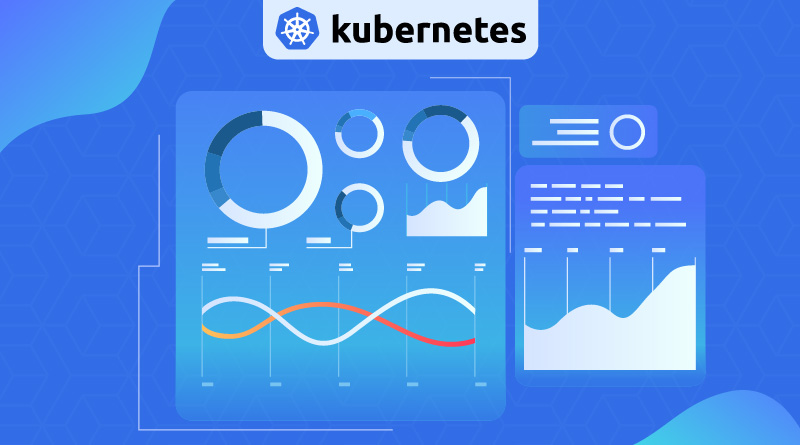Kubernetes is a staging application where developers test the coding of websites. And this staging application needs to be monitored also. This process is called the Kubernetes monitoring wherein you can easily and proactively manage the Kubernetes clusters. Monitoring Kubernetes clusters makes it easier to manage your containerized infrastructure by tracking uptime, resource usage, and interaction between cluster components.
As a result, your management task becomes easier because of the containerized infrastructure. You can track the utilization of cluster resources which includes CPU, memory and the storage. If the number of pods are not running and reach its critical limit, the cluster operators can monitor and receive alerts.
In this blog, we will understand everything about Kubernetes monitoring.
Key Metrics for Monitoring Kubernetes
The Kubernetes Metrics Server gathers data gathered from each node’s kubelet and sends it through the Metrics API for use with various visualization tools.
Some important metrics to think about monitoring include:
Why is Kubernetes Monitoring So Essential?
Explosive growth of containers in an enterprise-level business has benefited IT teams, DevSecOps, and developers globally in numerous ways. However, Kubernetes’ flexibility and scalability in the deployment of containerized apps also introduces additional difficulties.
Without the right tools, it can be difficult to monitor the health of apps that have been abstracted by containers and then again by Kubernetes because there is no longer a 1-to-1 correlation between an application and the server it runs on.
Try MilesWeb’s Managed Cloud Hosting For Numerous Benefits!
Best Tools for Monitoring Kubernetes
Containerized apps can be distributed across several environments, including the sophisticated Kubernetes environment. Monitoring programs must be able to take into account the transient nature of containerized resources and aggregate metrics from throughout the distributed environment. The following are well-liked monitoring programs created for a containerized setting.
1. Prometheus
Prometheus is a well-known monitoring tool that SoundCloud created before giving it to the Cloud Native Computing Foundation (CNCF). It offers alerts with thorough metrics and analysis for Kubernetes and Docker. It is intended for keeping track of large-scale container-based microservices and applications. Grafana and Prometheus are frequently combined to make data visualization possible.
2. Grafana
Four built-in dashboards for Kubernetes are provided by this open-source platform for the visualization of metrics and analytics: Cluster, Node, Pod/Container, and Deployment. Administrators of Kubernetes can use data from Prometheus to build data-rich dashboards in Grafana.
3. Kiali
For Istio-based service mesh architectures, Kiali offers a management user interface (UI). It offers dashboards for visualization and gives you the ability to control the mesh with strong setup and validation tools. The inferred traffic topology reveals the structure of the service mesh. Kiali allows access to Grafana, provides extensive metrics and visualizations of the mesh’s health, and interfaces with Jaeger to provide distributed tracing.
Related: Docker vs Kubernetes – Understand the Difference
Best Practices for Monitoring Kubernetes
Here are some top recommendations for monitoring and troubleshooting Kubernetes deployments.
1. Track the microservices API gateway to automatically find application problems
Granular resource indicators, such as memory, CPU, load, and others, are crucial for spotting problems with Kubernetes microservices, but they can be complicated and challenging to utilize. The greatest KPIs for identifying microservice concerns quickly are those related to APIs, like request rate, call error, and latency. These metrics make it easy to find degradations in a microservice component.
Automatic REST API request anomaly detection, such as using an ingress controller like Istio or Nginx, makes it simple to find service-level data.
2. Keep an eye out for high disk utilization
On any system, high disk consumption is the most frequent issue. Volumes that are statically attached to StatefulSet resources cannot be automatically recovered, nor is there a magic fix. The alarm is often set to 75% to 80% utilization. Alerts about high disk usage are always crucial and typically point to an issue with your application. The root file system must be watched as well as all disk partitions. Early pattern change identification can prevent problems later.
3. Keep an eye on the user experience while Implementing Kubernetes
The Kubernetes platform does not include end-user experience management. However, your Kubernetes monitoring strategy should take into account that an application’s main goal is to give the end user a satisfying experience.
4. Get ready for Cloud Environment Monitoring
When preparing your monitoring strategy, keep a few things in mind if Kubernetes is running in the cloud. You should also keep an eye on the following in the cloud:
- IAM events – Changing permissions, successful and unsuccessful login attempts. This is a recommended security procedure for a cloud-based setup or environment.
- Cloud API – Each cloud provider has a unique API that may be used to ask for resources from your Kubernetes installation and that needs to be watched carefully.
Costs in the cloud might increase quickly. You can set a budget for cloud-based Kubernetes services and prevent overpaying by using cost monitoring.
Network performance can be the main hindrance to application performance in a cloud-based implementation. Keep an eye on your cloud network frequently to avoid outages and poor user experience.
Conclusion
Since Kubernetes applications always run in application pods, the liveness and readiness probes in each pod can be used to assess the state of the individual apps. Applications are probably in good shape if they indicate that they are prepared to handle new requests and the node on which they are operating is not reporting any issues.







